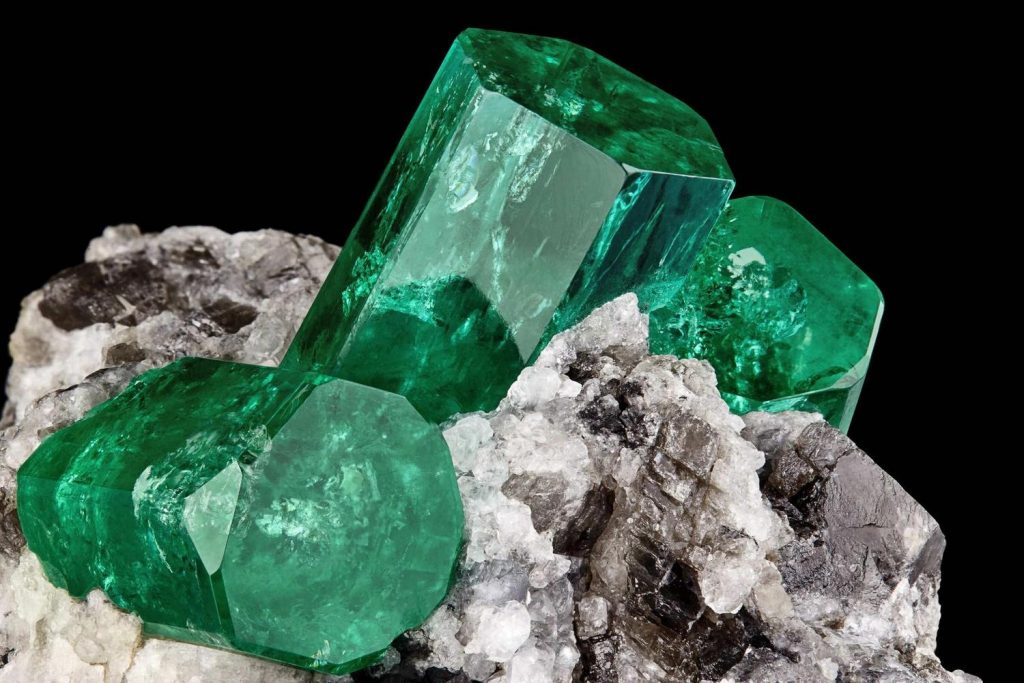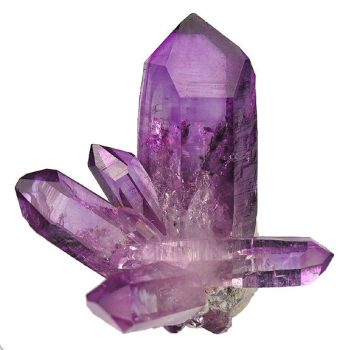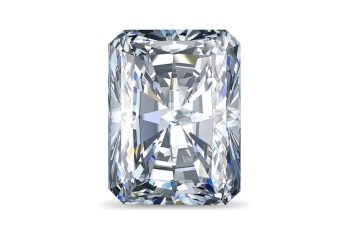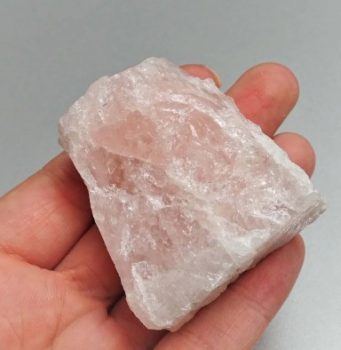When we talk about Emerald Gemstones, we are dealing with a stone that has a rich history. Its lush green color has been prized since emeralds were discovered thousands of years ago. Emeralds have also a profound meaning that has helped it to remain on of the top gemstones even today. In this post, we will discuss everything Emerald Gemstones. Its history, uses, physical characteristics, and meaning will all be delved into. We will also talk about lab emeralds, treatments, and how to get the best stone for your money.
What Is An Emerald?
An emerald is a gemstone that belongs to the beryl family. It is known for its vibrant green color, which is caused by the presence of chromium and vanadium in its crystal structure. Emeralds are highly valued for their beauty and rarity, making them one of the most sought-after gemstones in the world.
In terms of physical properties, emeralds have a hardness of 7.5 to 8 on the Mohs scale, which means they are relatively durable and resistant to scratches. However, they are also prone to cracking and chipping due to their natural inclusions and fractures.
Emeralds are typically found in hexagonal crystal shapes and have a refractive index of 1.57 to 1.58. They have a specific gravity of 2.67 to 2.78, which is slightly higher than most other gemstones. Additionally, emeralds have a vitreous to greasy luster, giving them a brilliant shine when properly cut and polished.
Overall, emeralds are not only visually stunning but also possess unique physical properties that contribute to their allure and desirability in the world of gemstones.
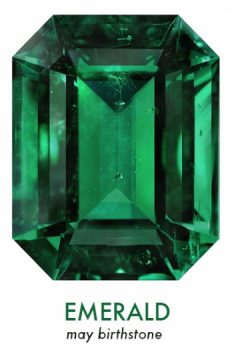
Emerald vs Green Beryl
Emerald and green beryl are two gemstones that share many similarities, but also have distinct differences. Both gemstones belong to the beryl mineral family and are valued for their beautiful green color. However, there are a few key characteristics that set them apart.
Firstly, the most significant difference between emerald and green beryl lies in their color intensity. Emeralds are known for their deep, rich green color, often described as “emerald green.” This intense hue is due to the presence of chromium and vanadium in the stone. On the other hand, green beryl has a lighter and more pale green color, lacking the vividness of emeralds.
Another distinguishing factor is the level of clarity. Emeralds are notorious for their inclusions, which are internal flaws or imperfections. These inclusions are often referred to as “jardin,” which is French for garden, due to their resemblance to foliage. In contrast, green beryl tends to have fewer inclusions and is generally more transparent.
Lastly, the value and rarity of emeralds compared to green beryl differ significantly. Emeralds are considered one of the most precious gemstones and are highly sought after. Their rarity, combined with their intense color and historical significance, contributes to their high value. Green beryl, while still a beautiful gemstone, is more readily available and therefore generally less expensive.
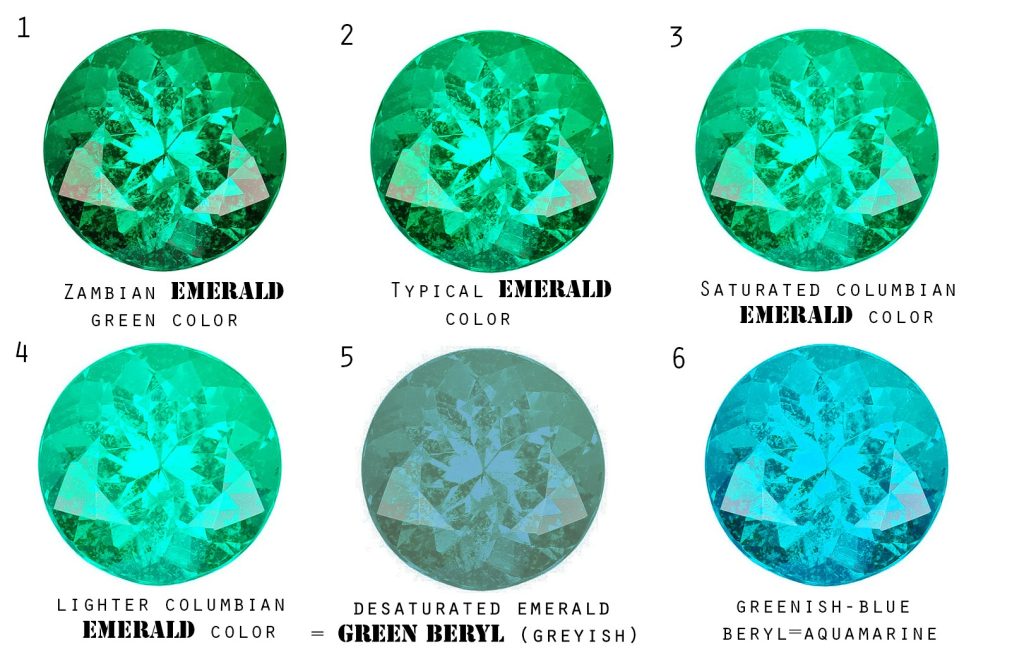
Where Are Emeralds Found?
Emeralds are primarily found in several locations around the world. One of the largest producers of emeralds is Colombia, particularly the Muzo and Chivor mines. These mines have been producing high-quality emeralds for centuries. Another significant source of emeralds is Zambia, where the Kagem mine is located. The emeralds from Zambia are known for their deep green color and excellent clarity. Other countries that produce emeralds include Brazil, Afghanistan, and Zimbabwe. It is important to note that the presence of emeralds in a specific location is dependent on geological factors such as the presence of the right minerals and the right conditions for their formation.

The History Of Emerald Gemstones
Emerald is a gemstone that has a rich and fascinating history. Its name comes from the Greek word “smaragdos,” meaning green gem. The first known emerald mines were in ancient Egypt, where the gem was highly prized by pharaohs and nobility. Cleopatra herself was said to have a passion for emeralds, and she used them in her jewelry and even gave them as gifts to foreign dignitaries.
In ancient Rome, emeralds were associated with Venus, the goddess of love and beauty. Roman emperors, such as Nero and Caligula, were known to have a fondness for emeralds and would wear them as a symbol of their power and wealth.
During the Middle Ages, emeralds were believed to have healing properties and were used to treat various ailments. They were also thought to bring good luck and protect against evil spirits. Many European monarchs and nobles owned emeralds and would pass them down through generations as family heirlooms.
In modern times, emeralds continue to be highly valued and sought after. Colombia is the world’s largest producer of emeralds, known for producing some of the finest quality gems. Other countries, such as Zambia, Brazil, and Afghanistan, also have significant emerald deposits.
Today, emeralds are used not only in jewelry but also in various industries, including technology and aerospace. Their vibrant green color and unique properties make them a truly remarkable gemstone with a long and storied history.
Emerald Gemstones In Mythology
Emeralds have long held a significant place in mythology. In ancient times, these gemstones were associated with various gods and goddesses. For example, in Egyptian mythology, emeralds were believed to be the favored gemstone of the goddess Isis, symbolizing fertility and rebirth. In Greek mythology, emeralds were associated with the goddess Venus, representing love and beauty. Additionally, emeralds were highly valued in Indian mythology, where they were believed to bring good fortune and protect against evil spirits. Overall, emeralds have played a prominent role in mythology, representing different aspects of life and carrying powerful symbolism.
Apart from their mythological significance, emerald gemstones have also been highly prized for their beauty and rarity throughout history. Their vibrant green color, often described as “emerald green,” has captivated people for centuries. Emeralds were considered a symbol of wealth and luxury, and were often used in royal jewelry and crowns. In addition to their aesthetic appeal, emeralds have also been attributed with various healing properties in different cultures. They were believed to promote physical and emotional well-being, and were used to treat ailments such as eye problems and digestive issues.
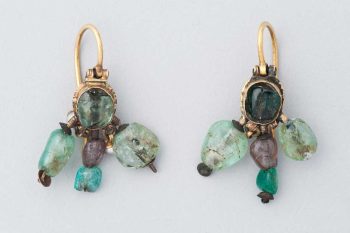
Famous Emerald Gemstones From History
Emeralds have captivated people throughout history. Here are three famous emeralds that have left a lasting impact on the world.
First, we have the Mogul Emerald, a 217.80-carat gemstone that dates back to the 17th century. This emerald is known for its exceptional size and quality, with a vibrant green hue that is truly mesmerizing. It was once owned by various Mughal emperors of India before finding its way to the West. Today, the Mogul Emerald is housed in the New York Museum of Natural History, where it continues to dazzle visitors with its beauty.
Next, we have the Chalk Emerald, a 37.82-carat gemstone that is famous for its unique color and flawless clarity. This emerald was once part of a tiara owned by Princess Katharina Henckel von Donnersmarck, a German noblewoman. The Chalk Emerald is renowned for its intense bluish-green shade, which is rare among emeralds. It is currently on display at the Smithsonian National Museum of Natural History, where it attracts countless admirers.
Lastly, we have the Patricia Emerald, a 632-carat gemstone that is one of the largest and most valuable emeralds in the world. Discovered in Colombia in 1920, this emerald is named after the mine owner’s daughter, Patricia. Its exceptional size and deep green color make it a true marvel of nature. The Patricia Emerald is privately owned and has been showcased in various exhibitions, allowing people to marvel at its beauty and rarity.
These famous emeralds serve as a testament to the allure and timeless beauty of these gemstones. Whether they are on display in museums or held in private collections, they continue to captivate people with their vibrant colors and rich histories.
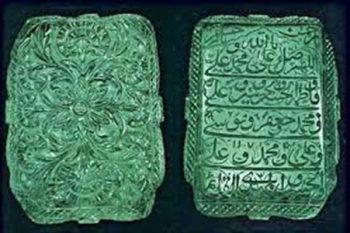
Emerald Symbolism
Emeralds have long been associated with symbolism and meaning. In many cultures, emeralds are seen as a symbol of love and rebirth. The vibrant green color of emeralds is often associated with nature and growth. This gemstone is believed to bring harmony and balance to the wearer. Additionally, emeralds are thought to have healing properties and can promote good health. Overall, emeralds hold a special place in the world of gemstones and continue to be cherished for their symbolism and beauty.
In ancient times, emeralds were often worn by royalty and nobility. They were seen as a symbol of wealth and power. Emeralds were also believed to protect against evil spirits and bring good fortune. In some cultures, emeralds were even thought to have the ability to predict the future. Today, emeralds are still highly valued and sought after for their beauty and symbolism.
Cons of Emerald Gemstones
Emerald gemstones, while beautiful, come with their fair share of drawbacks. Firstly, emeralds are known for their fragility. They are prone to cracking and chipping, making them less durable compared to other gemstones. Additionally, emeralds require regular maintenance and care to preserve their vibrant green color. This includes avoiding exposure to harsh chemicals and extreme temperatures. Lastly, emeralds can be quite expensive, especially if they are of high quality. This can make them less accessible to individuals with a limited budget. Despite their allure, it is important to consider these cons before investing in emerald gemstones.
Emerald Color Range
The emerald color range encompasses various shades of green. From deep, rich hues to lighter, more vibrant tones, emerald colors are known for their captivating beauty. These colors can be found in nature, such as in emerald gemstones and lush vegetation, as well as in man-made objects like clothing and home decor. Whether you’re looking to incorporate emerald colors into your wardrobe or add a touch of green to your living space, the emerald color range offers a wide array of options to suit your preferences.
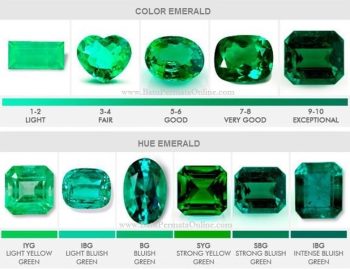
Lab Made Vs Natural Emerald Gemstones
Lab made and natural emerald gemstones are both popular choices for jewelry enthusiasts. While they may appear similar, there are some key differences between the two.
Lab made emeralds, also known as synthetic or created emeralds, are produced in a laboratory setting using advanced technology. These gemstones are created by replicating the natural process of emerald formation, resulting in stones that have the same chemical composition and physical properties as natural emeralds. Lab made emeralds are often more affordable than their natural counterparts, making them a great option for those on a budget.
On the other hand, natural emeralds are formed deep within the Earth’s crust over millions of years. These gemstones are prized for their rarity and unique characteristics. Natural emeralds often have inclusions, which are internal imperfections that give each stone its own distinct personality. These inclusions can add to the beauty and value of the gemstone.
When it comes to choosing between lab made and natural emeralds, it ultimately depends on personal preference and budget. Lab made emeralds offer a more affordable option without compromising on quality, while natural emeralds are cherished for their rarity and natural beauty. Whether you choose a lab made or natural emerald, both options are sure to make a stunning addition to any jewelry collection.
What Do Natural Emerald Stones Cost?
Natural emerald stones can vary in price depending on several factors. These factors include the size, color, clarity, and overall quality of the stone. On average, a high-quality natural emerald stone can cost anywhere from $500 to $5,000 per carat. However, larger and more exceptional stones can command prices upwards of $10,000 per carat. It’s important to note that these prices are just a general guideline and can vary greatly depending on the specific characteristics of the stone. If you’re interested in purchasing a natural emerald stone, it’s recommended to consult with a reputable jeweler who can provide you with more detailed information and help you find the perfect stone within your budget.
Natural Emerald Treatments
Emeralds often undergo various treatments to enhance their appearance and durability. These treatments are commonly accepted in the gemstone industry and aim to improve the overall quality of the emeralds. One of the most common treatments is oiling, where emeralds are immersed in a colorless oil to fill surface-reaching fractures and improve clarity. This treatment is reversible and does not affect the value of the emerald.
Another treatment method is the use of resins or polymers to fill fractures and enhance the gemstone’s clarity. This treatment is more permanent than oiling but can be detected under magnification. It is important to note that these treatments are widely accepted and disclosed in the gemstone trade. However, it is always recommended to purchase emeralds from reputable sources that provide full disclosure of any treatments applied.
Unfortunately, these treatments are not always disclosed. They should be though. Be sure to ask your seller about any treatments before buying.
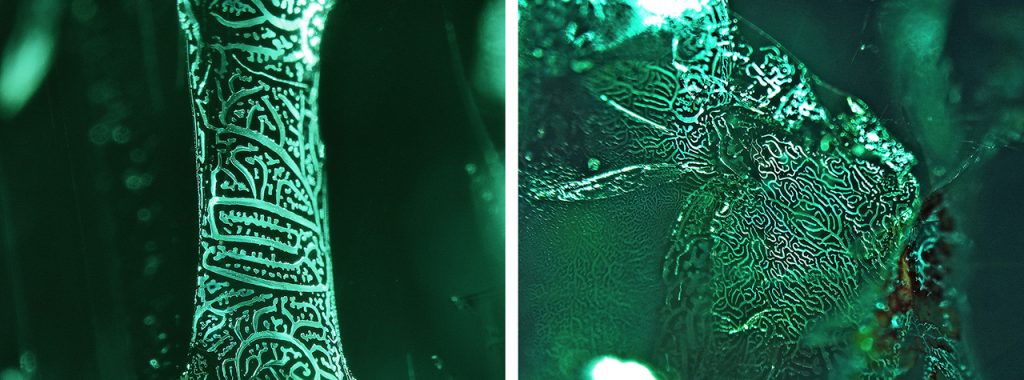
How To Get The Best Emerald For Your Money
When it comes to buying an emerald, getting the best value for your money is key. Here are some tips to help you find the perfect emerald without breaking the bank.
First and foremost, consider the color of the emerald. Color is the most expensive characteristic of emerald. Look for a vibrant, rich green hue with a slight blue undertone. Avoid emeralds that are too dark or too light, as they may lack the desired intensity. And don’t always go for the stone with the best color. A tone that is just slightly less desirable can save you quite a bit on a larger stone.
Next, pay attention to the clarity of the emerald. Look for stones with minimal inclusions or imperfections. While some inclusions are expected in emeralds, too many can affect the overall beauty and durability of the stone. In general, emeralds are one of the “dirtier” stones, so do not be alarmed if the clarity of your emerald would turn away a diamond buyer. Emeralds with no eye visible inclusions can be rare and very expensive.
Lastly, consider the cut and carat weight of the emerald. Choose a well-cut stone that maximizes its brilliance and sparkle. As for carat weight, remember that larger emeralds are rarer and more expensive. Consider your budget and personal preferences when deciding on the size of the stone.
By following these tips, you can help yourself get the best emerald for your money.
